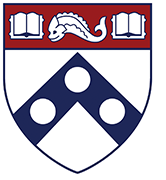Izzy Huang’s experience working in aerospace at SpaceX represents one facet of her enthusiasm for learning. As an EE undergraduate pursuing a submatriculation master’s in Robotics, Huang’s interests range from hardware and circuits to robot design and control. “Developing a broad understanding across multiple engineering disciplines allows me to better understand and innovate within cross-disciplinary fields.”
Huang’s SpaceX internship introduced her to aerospace engineering for the first time, and she bubbles with excitement as she describes her experience on the Falcon Avionics Team in LA. In this role, Huang was responsible for testing and verifying the avionics for the Falcon rocket. “As you can imagine, sending electronics into space exposes them to extreme thermal fluctuations and intense vibrations,” Huang explains. “All of the electronics that go onto the rocket have to be acceptance tested to make sure they can withstand those changes.”
Huang characterizes the experience as transformative due to the high degree of ownership she received over her projects. “I had a mentor and a manager, but I took a lot of initiative in executing the projects, unblocking blockers, and understanding their impact within the company.”
Collaboration and asking questions helped Huang take ownership of the work. “We worked closely with lab technicians and other Falcon teams,” Huang says, explaining that it provided a high-level view of team responsibilities. “Everyone was incredibly helpful and willing to answer my questions and explain technical concepts. From this culture, I was able to learn a lot in a short amount of time.” Huang says. Beyond fostering a collaborative work environment, the Falcon Program hosted team-bonding activities such as hikes, beach outings, and Korean BBQ, Huang adds.
As for her research at Penn, Huang spent her sophomore year working with the Singh Center’s Principal Scientist, Dr. Sam Azadi, to develop and fabricate superhydrophobic microfluidic devices. The project’s goal? “We aimed to develop unique channel geometries to minimize friction and risk of clogging, enabling more efficient fluid flow for applications such as large-scale bio-experiments or organ-on-a-chip.” According to Huang, this process entailed exploring non-linear channel shapes, specifically hexagons, to analyze flow effects on output.
This spring, Huang will study at the Chinese University of Hong Kong. “My grandpa grew up in Hong Kong, so I feel it will be an eye-opening experience to see how the city has changed based on the stories he’s told,” Huang says. She’s excited to meet new people and experience Hong Kong’s vibrant startup and tech scene, along with the city’s rich culture.
As for her plans after Hong Kong? Huang will return to SpaceX next summer, focusing on hardware design for Starlink satellites. Looking ahead to Senior Design, Huang sees the project as an opportunity to apply her technical skills to a problem with real market potential. She’s already been thinking of an idea with her teammates and how the experience could evolve into a startup venture.

